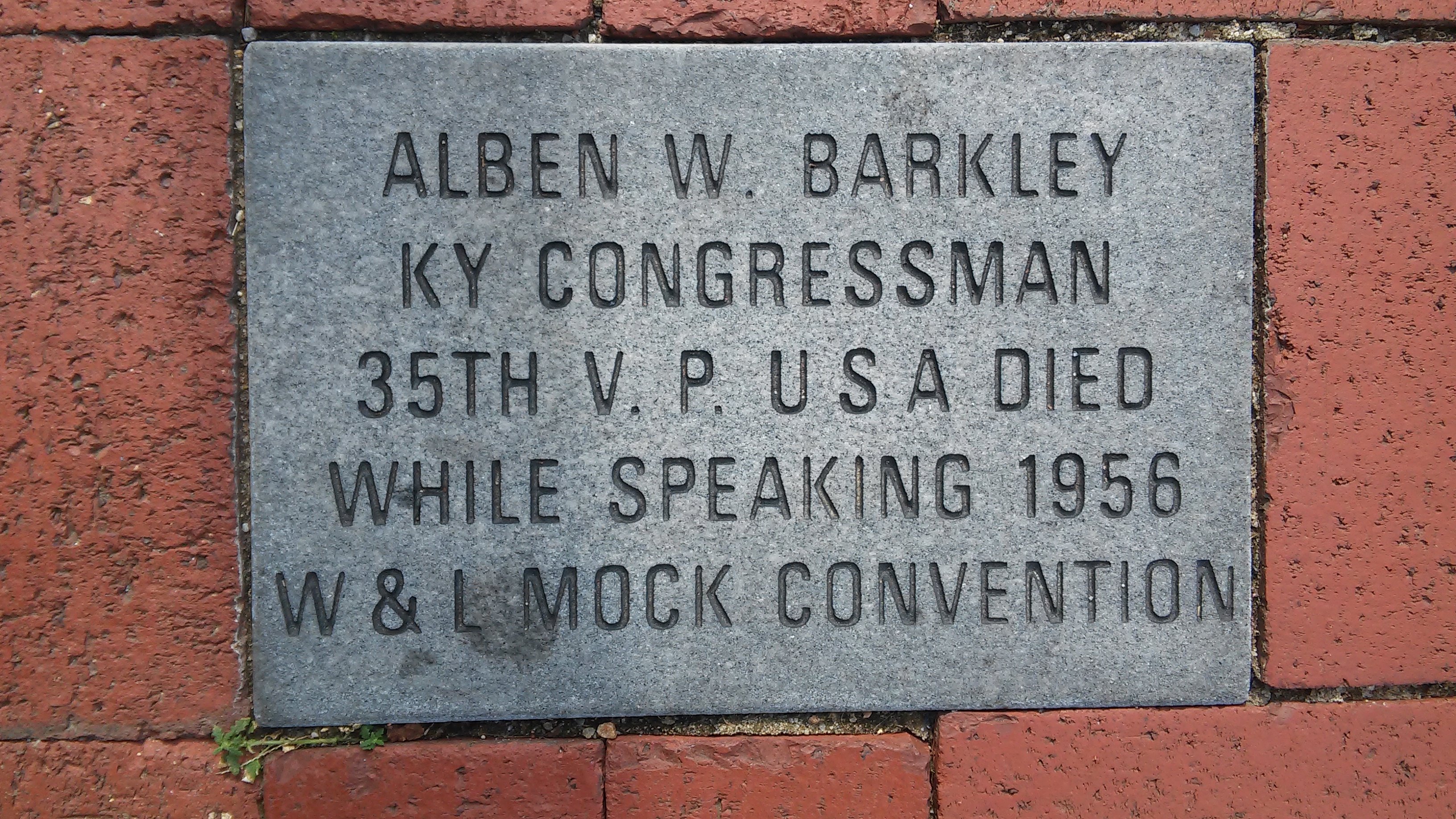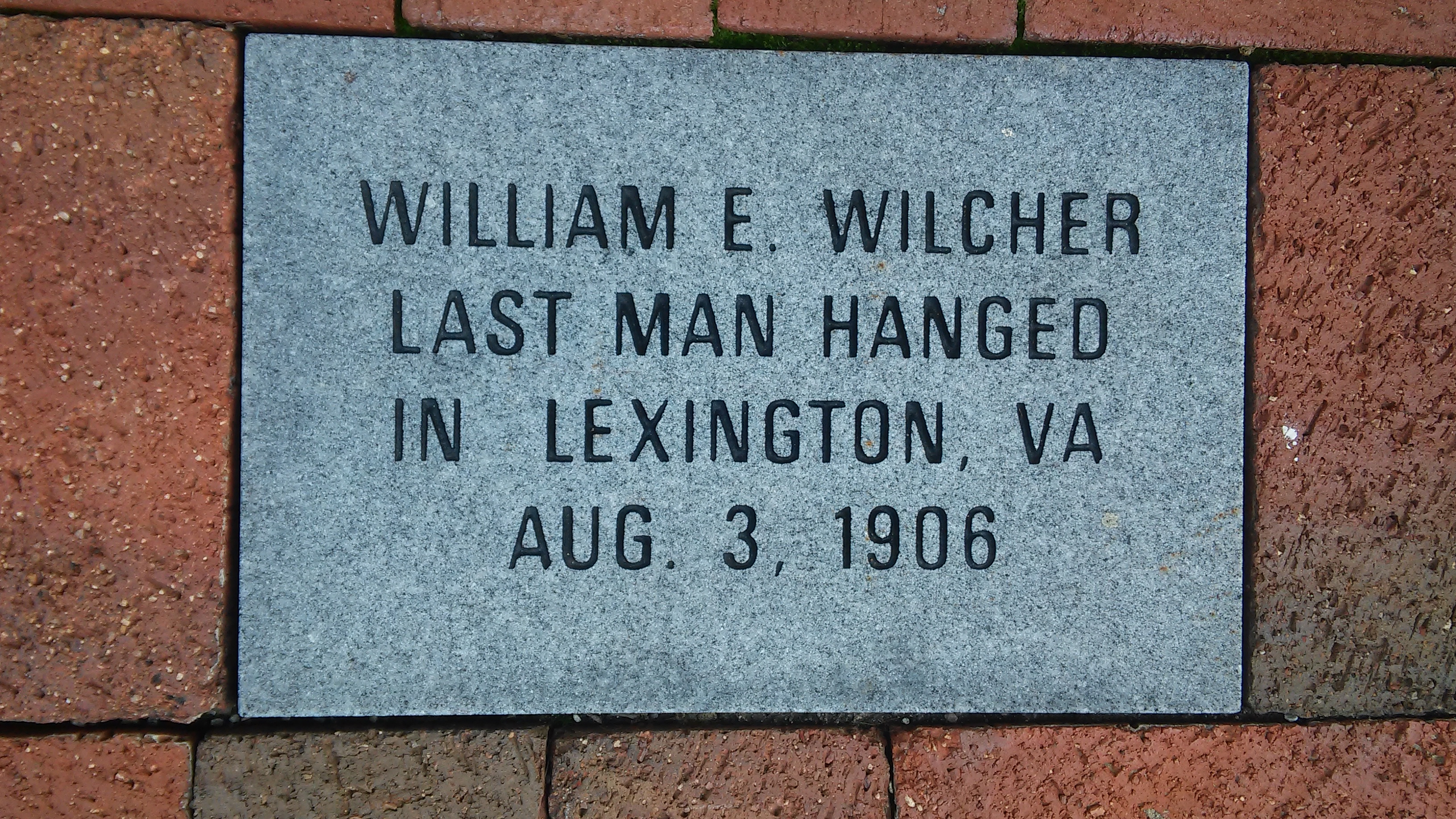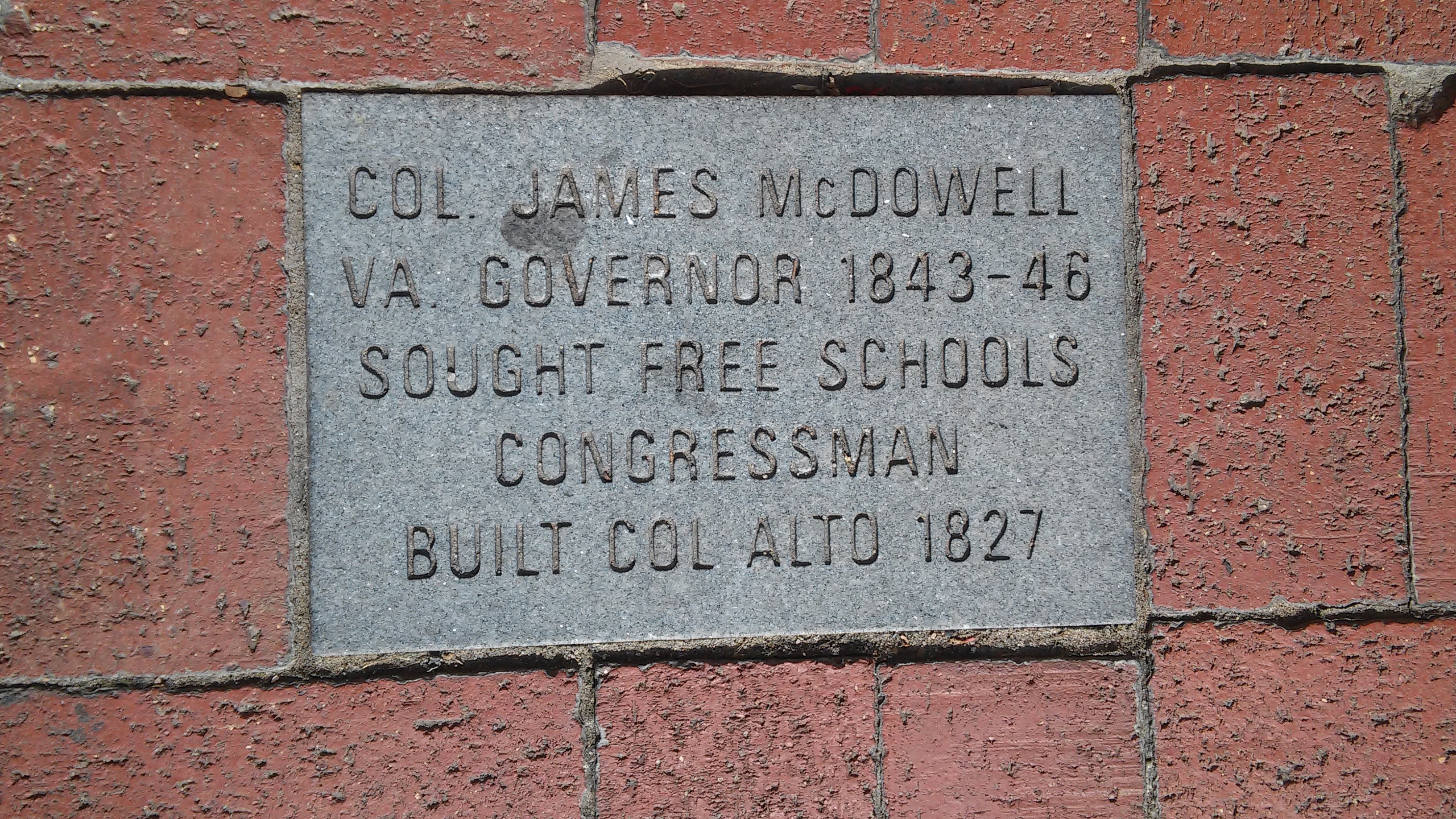Nelson Street
Hunter was head of U.S. Army of Western Virginia during Civil War in 1864. He had received the moniker “Black Dave” for emancipating slaves in three states, (an order rescinded by President Lincoln.) He was ordered to destroy rail service in the Shenandoah Valley from Port Republic to Lynchburg and followed a scorched earth policy. He proceeded to Lexington from Staunton in June with an augmented force and bombarded VMI, Washington College, and town of Lexington. The house of Governor John Letcher, and VMI (in retaliation for the cadets’ participation in the Battle of New Market) were burned. After a weekend occupation, Hunter continued towards Buchanan and Lynchburg, where he was defeated and relieved of command. This was the only Union assault on the Rockbridge area in the war.
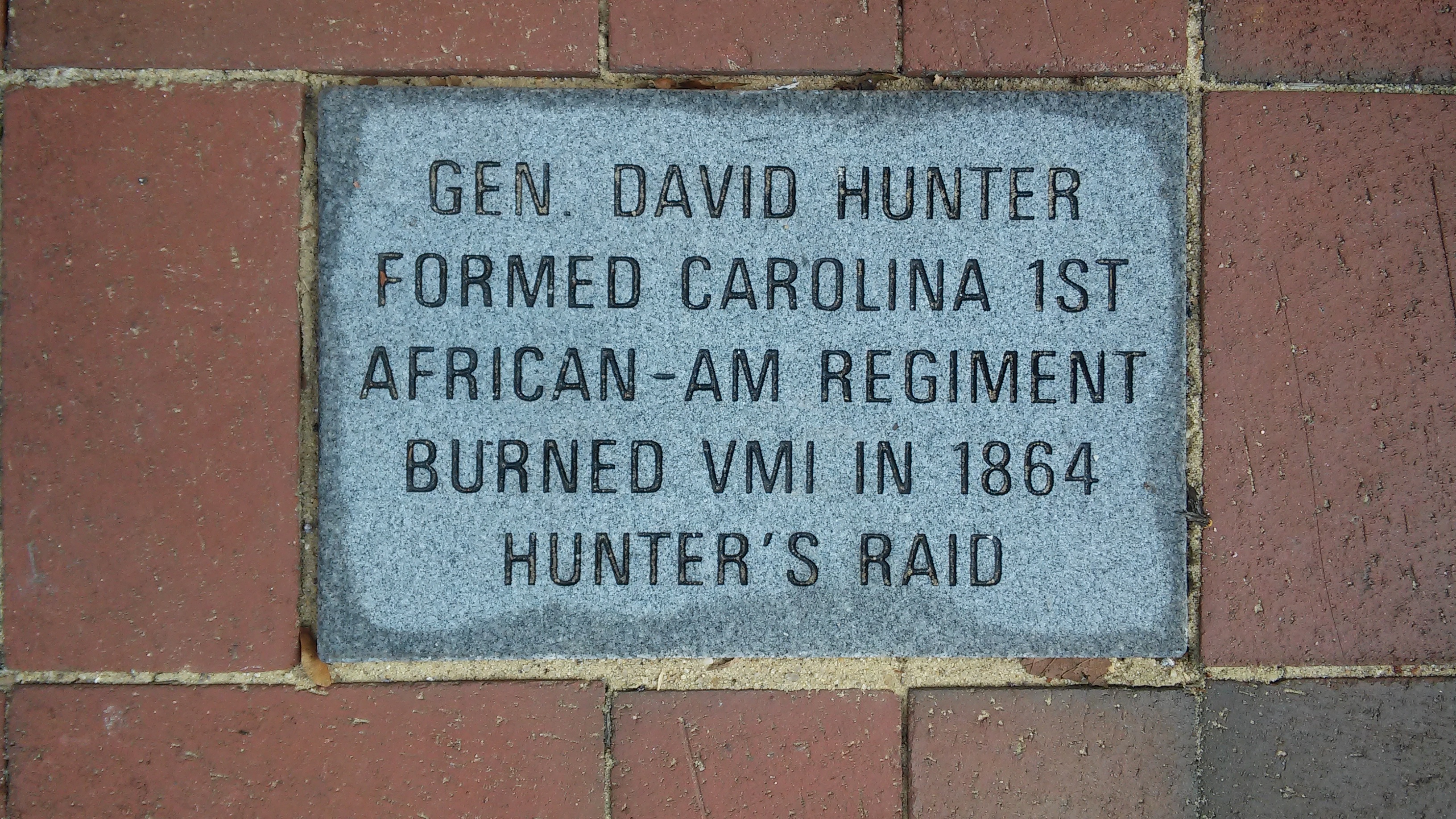

“The whole plan of grace appeared as day.” He was 18, when it happened at Bushy Hills: the spiritual conversion that the young man had been waiting for, after a series of polar swings between inspirited ‘awakening’ and backsliding despair (see bottom*, for his extended account of this pivotal moment in his personal and professional growth).
Archibald was born on South River, near Irish Creek, grandson of first High Sheriff of Rockbridge, and son to one of the County’s earliest and largest landowners. At age 10 he began his studies at William Graham’s Liberty Hall Academy in Timber Ridge (the academy would eventually move to Lexington, as first foundation for what would become Washington and Lee University).
After beginning his educational career as a tutor to the children of Gen. Thomas Posey (Revolutionary War officer, and future Governor of Kentucky and Indiana), Alexander focused his attentions on the ministry. Returning to Rockbridge for further instruction by his mentor, Rev. Graham, Alexander was ordained in 1794, preaching as an itinerant Presbyterian serving several Virginia counties.
His talents as an educator, preacher and writer would soon be recognized by many, appointed to be the 4th President of Hampden Sydney (1797-1806), and most notably invited to be the First Professor and First Principal of the newly established Princeton Theological Seminary (now Princeton University) where he served for from 1812-1851.
Alexander published prolifically across a wide range of genres: from instructional tracts for children and theological guides for his fellow ministers; to broad histories of the “Israelite nation” and African colonization; to topical events of dramatic interest, including the tragic 1811 ‘Christmas Fire’ at the Richmond Theater.
In 1843, he delivered an alumni address at Washington College, and his writings include a number of warm nods to his native haunts, writing about the charms of House Mountain and Jump Mountain and calling Natural Bridge, “this extraordinary lusus naturae … no pen or pencil can convey any adequate idea of the object… The first view which I obtained of the beautiful and elevated blue limestone arch, springing up to the clouds, produced an emotion entirely new; the feeling was as though something within sprung up to a great height by a kind of sudden impulse.”
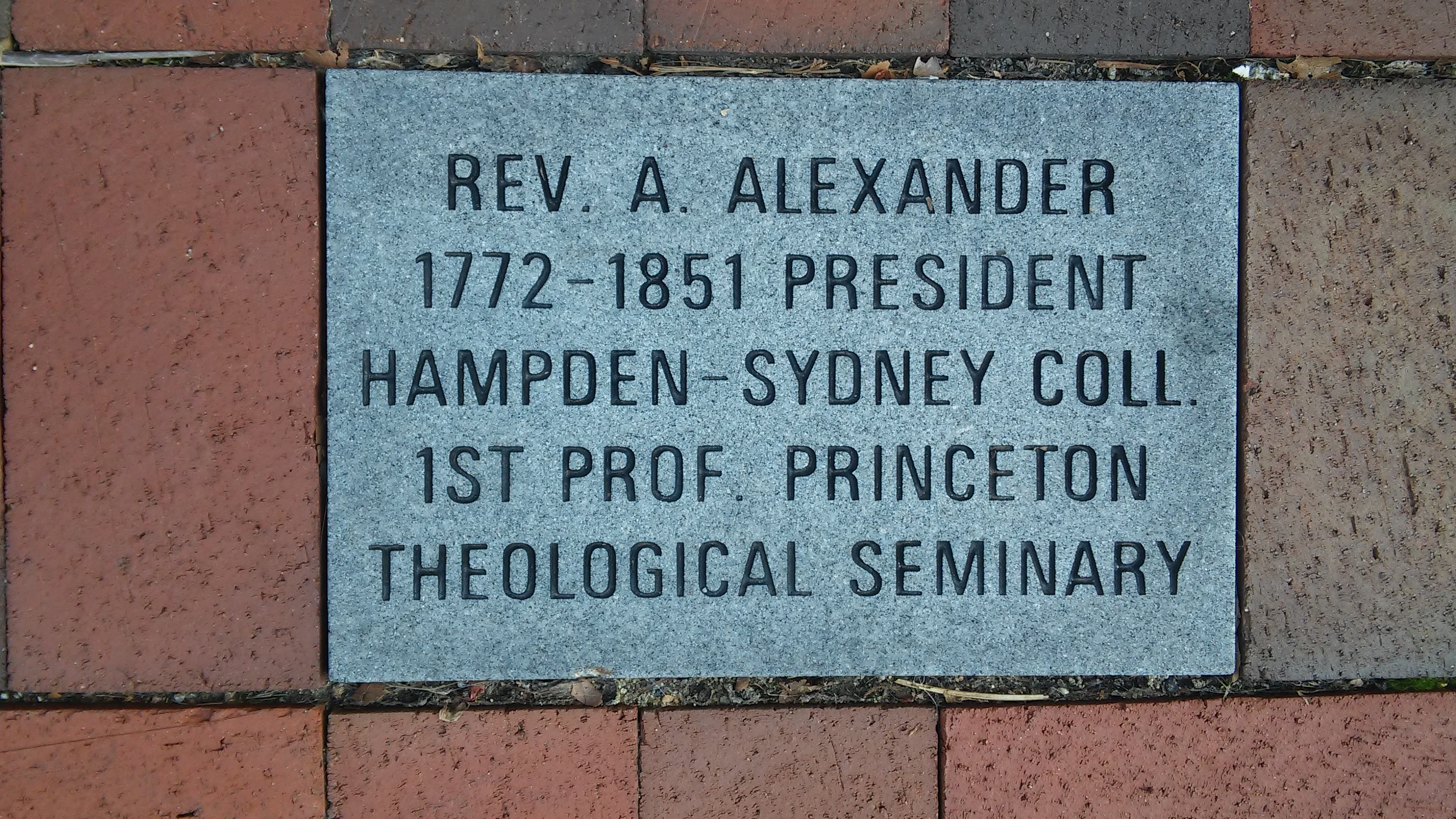

Barkley was born in Wheel, Kentucky, became a U.S. congressman, Senator and the 35th Vice president on the 1948 ticket with President Harry S. Truman. He considered a presidential race in 1952, then won a Senate seat in 1954. Addressing the Washington and Lee University Mock Convention on April 30, 1956, he quoted Psalm 84:10: “I’m glad to sit on the back row, for I would rather be a servant in the House of the Lord than to sit in the seats of the mighty.” He then collapsed to the floor and died of a heart attack. He is buried near Paducah, Kentucky.
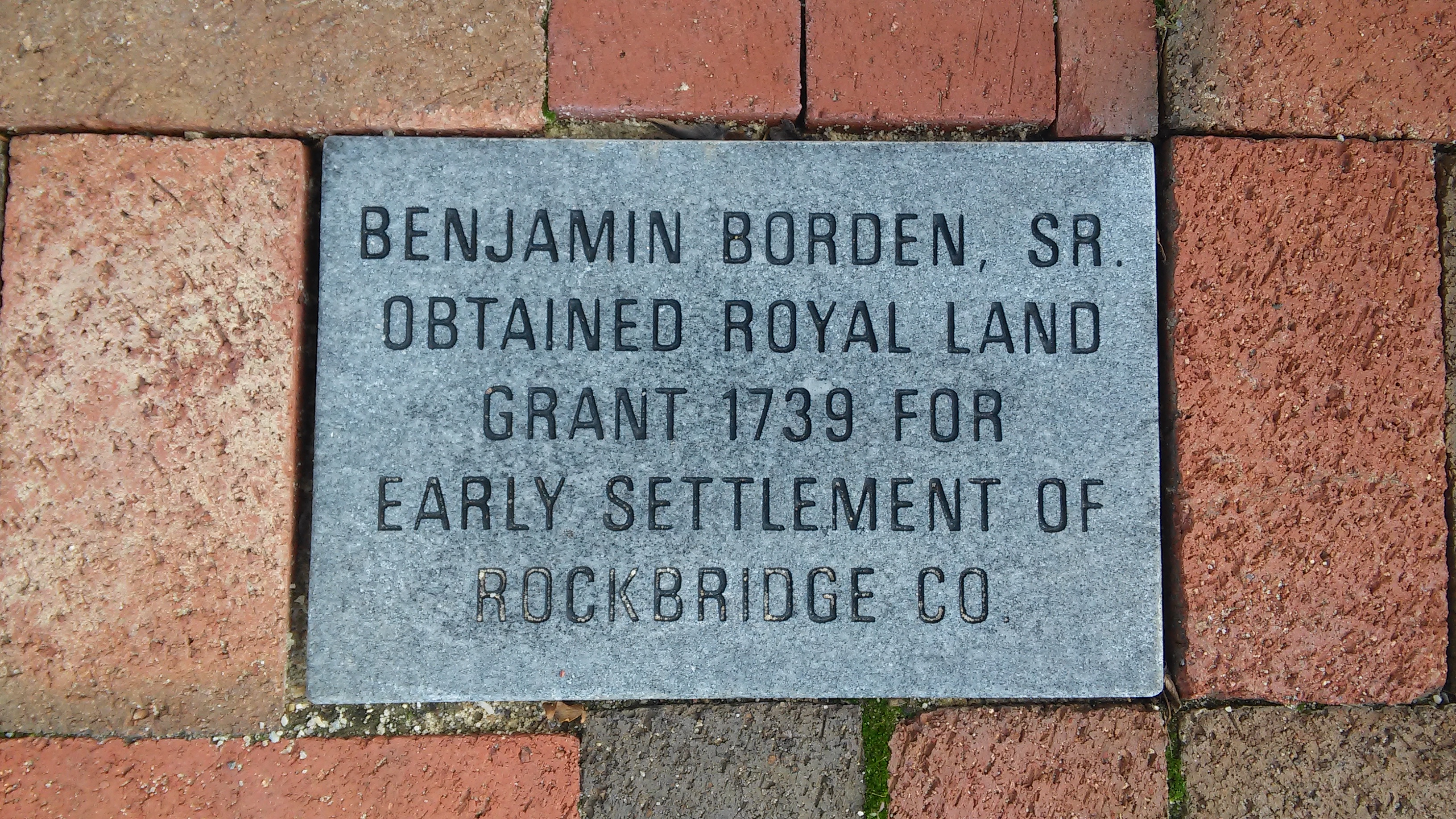

Benjamin C. Moomaw is widely recognized as the ‘Founder of Buena Vista.’ After establishing a local tannery, Moomaw foresaw the joint potential of new railroads, waterways, and industry to support a much larger town. In 1888, he created the Buena Vista Company, which sold out its stock shares in 30 days for $400,000, rapidly leading to the naming of the town, a city Charter in 1890, and “The Boom” of other factories, heavy industries, churches, stores, city offices, schools and homes that would create a dynamic new city almost overnight.
A minister of the Church of the Brethren, Moomaw lived with his family at Green Forest, about 600 acres, along the Maury River in the late nineteenth century. With nearby rail development, he dreamt of a prosperous city and invited a canning factory, a tannery, and a pulp and paper mill. With the help of others, he created the Buena Vista Company in 1889 to develop the surrounding lands. Stock sales went wild, and residential units, factories, stores, churches, a newspaper and hotel soon appeared. The town also gained early status as a city in 1892. The Depression of 1892-93, however, sank the quick progress.
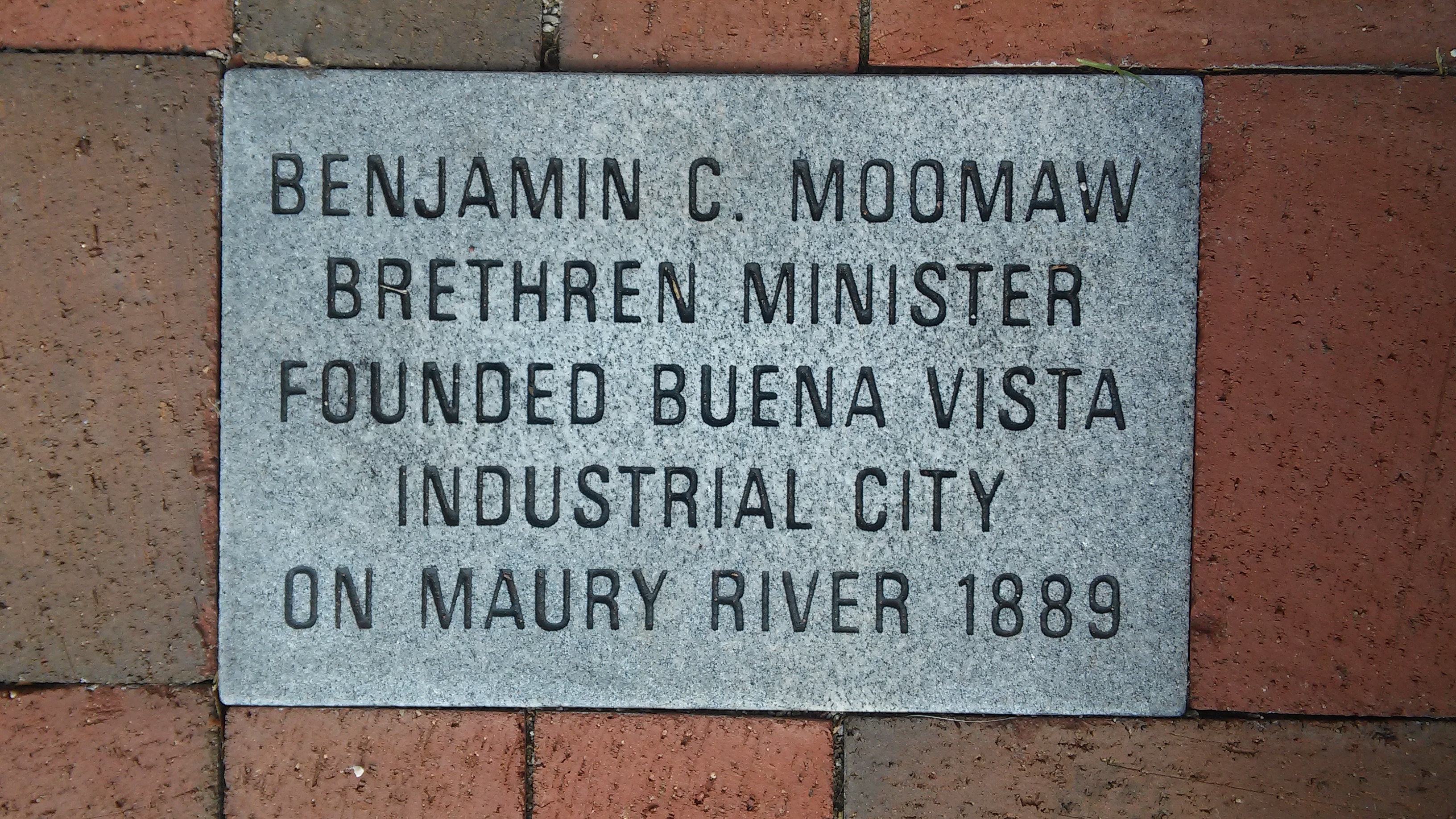

Bull Paxton was born in Rockbridge County in 1828 and attended Washington College ( now Washington and Lee University.) He was an early secessionist, and his outspoken views caused a rift in his friendship with General Stonewall Jackson. After the outbreak of the Civil War, Paxton chose to fight for his home state and join the Confederate cause. Jackson and Paxton renewed their friendship while serving together, and it was Jackson who promoted him to brigadier general in November of 1862. Although the choice caused some discontent among the soldiers, Jackson argued that he was the “best qualified” for the position. They both died from wounds incurred at the Battle of Chancellorsville and are buried together at Stonewall Jackson Memorial Cemetery.
Paxton’s home is located in Glen Maury Park, Buena Vista and has been designated a Virginia Historical Landmark. It is open to the public occasionally for community events and Civil War re-enactments.


On July 14th, 1786, a Shawnee raiding party attacked the Moore farm in Tazewell County’s Abb’s Valley. Most members of the Moore family were killed, either during the raid or later as prisoners during a forced trek to Ohio, the Shawnee’s homeland. There Mary Moore was sold into slavery for eight gallons of rum to a Mr. Stogwell, who took her to Canada and treated her more harshly than the Shawnee, according to her son James in The Captives of Abb’s Valley: The Massacre & Captivity of Settlers in Virginia by Indians, 1786.
Ransomed three years later, Mary married Rev. Samuel Brown of Brownsburg’s New Providence Church. They had eleven children and their descendant family branches include many luminaries of Rockbridge County.


Righteous or Rascal? Robinson, an uneducated Irish immigrant who became a local merchant, horse trader and whiskey distiller, amassed a fortune. His estate at Hart’s Bottom became the primary site of the new city of Buena Vista in 1889. Robinson donated the funds for the central building of Washington College (now W&L). For the dedication celebration in 1824, he supplied a huge barrel of whisky for the dignitaries in attendance. But, according to a contemporary history, the rabble broke through the barriers and created pandemonium, which ended only when college officials axed the barrel.
Robinson willed his entire estate and belongings to Washington College and is buried beneath an obelisk on the front campus of what is now Washington and Lee University; a National Historic Landmark.
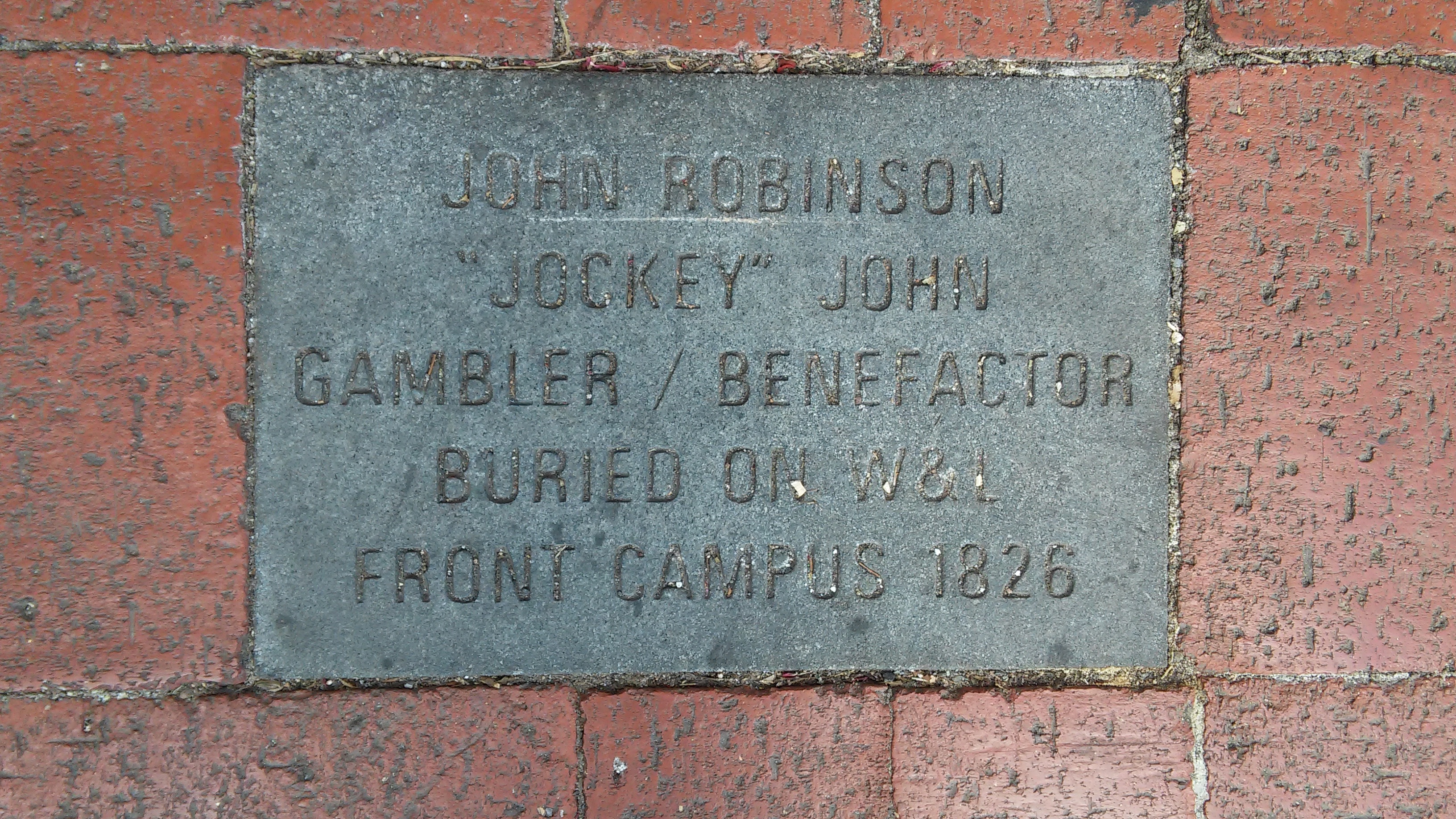

The embodiment of the W&L teacher-scholar model, art historian Pam Simpson served on the faculty at Washington and Lee University for 38 years. As W&L’s first female tenure-track professor, not only did she pave the way for women faculty at W&L, mentoring them and serving as a role model, but she also played a critical role in the University’s transition to coeducation in the mid-1980s.
Simpson taught courses in American, English and modern European art and architecture; women artists; African-American art and vernacular architecture. She wrote three books, including The Architecture of Historic Lexington, co-authored with the Royster Lyle Jr., in 1979. In addition, she authored numerous exhibition catalogues, articles in both the academic and popular press, and book reviews.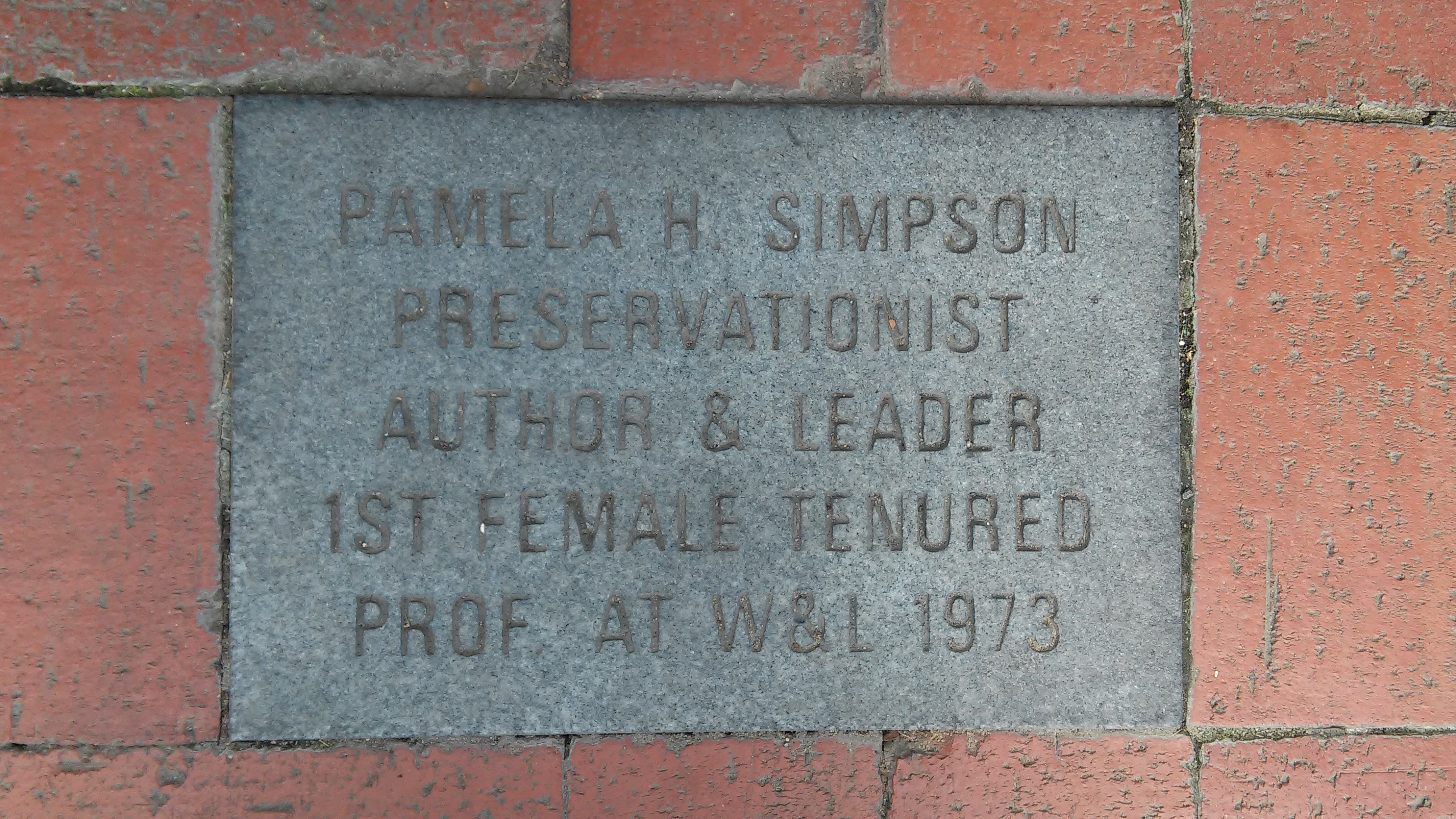

Twombly was born and raised in Lexington, where his father was a renowned swim coach at Washington and Lee University. He was named for renowned baseball star, Cy Young. After two years at the Boston Museum School, Twombly returned to W&L to study art and worked with Marion Junkin the first chair of that university’s art department as well as Pierre Daura, both well regarded artists. Stints in New York City and the avant-garde Black Mountain College in Asheville, N.C. readied him for his first trip to Italy in 1952. Though he would spend much of his career in Italy, he maintained a studio and residence in Lexington, and once said that Italy reminded him of the “faded grandeur of Lexington…Virginia is a good start for Italy.” His distinctive, abstract, and often monumental paintings remain hallmarks in major museums around the world.


Maury’s numerous namesakes include the river which runs through Rockbridge County, and a moon crater. In 1842 he became the first superintendent of the United States Naval Observatory. He resigned in 1861 to serve Virginia during the Civil War, perfecting an electric “torpedo” (naval mine) which wreaked havoc with Northern shipping. Maury charted the seas partially by using data gathered by sea captains, who threw bottles overboard that contained notations about current position and conditions and picked up bottles thrown by others. He was one of the first to recognize the value of “big data” and published the groundbreaking ‘The Physical Geography of the Sea and Its Meteorology’ in 1855, earning him his nick name.
Following the war, Maury chaired the physics department at Virginia Military Institute until his death. He stipulated that his funeral procession to Richmond go through Goshen Pass in springtime.


Barkley was born in Wheel, Kentucky, became a U.S. congressman, Senator and the 35th Vice president on the 1948 ticket with President Harry S. Truman. He considered a presidential race in 1952, then won a Senate seat in 1954. Addressing the Washington and Lee University Mock Convention on April 30, 1956, he quoted Psalm 84:10: “I’m glad to sit on the back row, for I would rather be a servant in the House of the Lord than to sit in the seats of the mighty.” He then collapsed to the floor and died of a heart attack. He is buried near Paducah, Kentucky.
